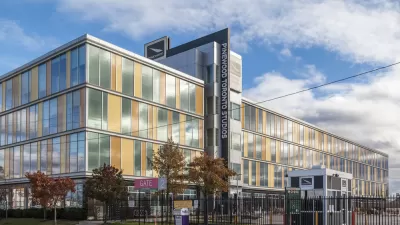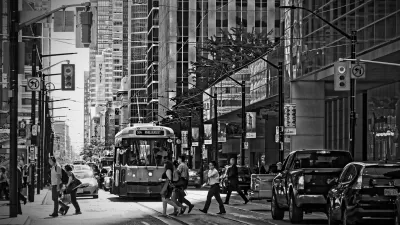Toronto’s 2013 Vital Signs Report cautions that while Canada’s largest city has a lot going for it, growing income disparity, high youth unemployment, and housing un-affordability threaten its future as one of the world’s most livable cities.
“Toronto has some impressive assets which, taken together, form a foundation that makes this city so appealing to residents, newcomers, and visitors,” write John B. MacIntyre and Rahul K. Bhardwaj of the Toronto Community Foundation, which publishes the annual Vital Signs Report. “This is an enviable position,” they continue, “but not without serious challenges. Take a closer look and you’ll see worrying cracks in the foundation — alarming trend lines that are unprecedented in this city.”
“Our divided city is a case in point. With precarious work and youth unemployment on the rise, more than one million residents now live in low- and very low-income neighbourhoods. And the decline of middle-income neighbourhoods continues.”
In their discussion of unemployment, the authors write that, “even though the overall unemployment rate in Toronto is dropping, youth unemployment hit an alarming and unacceptable high of 20.75 per cent in 2012. A TD Economics report warns of long-term 'scarring' effects of chronic under- and unemployment for this generation.”
On the subject of housing affordability, MacIntyre and Bhardwaj note that, “In a survey of 337 international housing markets, this city ranks as 'severely' unaffordable. In fact, the number of people on waiting lists for affordable housing has never been higher.”
Towards addressing these unsettling trends, the authors suggest that part of the solution lies in acknowledging and untangling the inter-connectedness of the issues. They assert that “while community based programs are important in addressing these challenges, the long term solutions will be found in broad based, system-wide innovations requiring us to think and act like a network.”
FULL STORY: Vital Signs 2013: Reboot the logic . . . please!

Alabama: Trump Terminates Settlements for Black Communities Harmed By Raw Sewage
Trump deemed the landmark civil rights agreement “illegal DEI and environmental justice policy.”

Planetizen Federal Action Tracker
A weekly monitor of how Trump’s orders and actions are impacting planners and planning in America.

The 120 Year Old Tiny Home Villages That Sheltered San Francisco’s Earthquake Refugees
More than a century ago, San Francisco mobilized to house thousands of residents displaced by the 1906 earthquake. Could their strategy offer a model for the present?

In Both Crashes and Crime, Public Transportation is Far Safer than Driving
Contrary to popular assumptions, public transportation has far lower crash and crime rates than automobile travel. For safer communities, improve and encourage transit travel.

Report: Zoning Reforms Should Complement Nashville’s Ambitious Transit Plan
Without reform, restrictive zoning codes will limit the impact of the city’s planned transit expansion and could exclude some of the residents who depend on transit the most.

Judge Orders Release of Frozen IRA, IIJA Funding
The decision is a victory for environmental groups who charged that freezing funds for critical infrastructure and disaster response programs caused “real and irreparable harm” to communities.
Urban Design for Planners 1: Software Tools
This six-course series explores essential urban design concepts using open source software and equips planners with the tools they need to participate fully in the urban design process.
Planning for Universal Design
Learn the tools for implementing Universal Design in planning regulations.
Clanton & Associates, Inc.
Jessamine County Fiscal Court
Institute for Housing and Urban Development Studies (IHS)
City of Grandview
Harvard GSD Executive Education
Toledo-Lucas County Plan Commissions
Salt Lake City
NYU Wagner Graduate School of Public Service





























